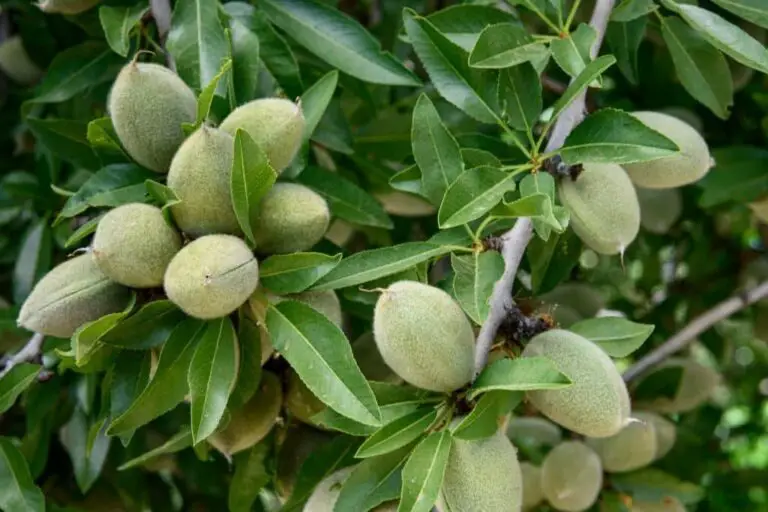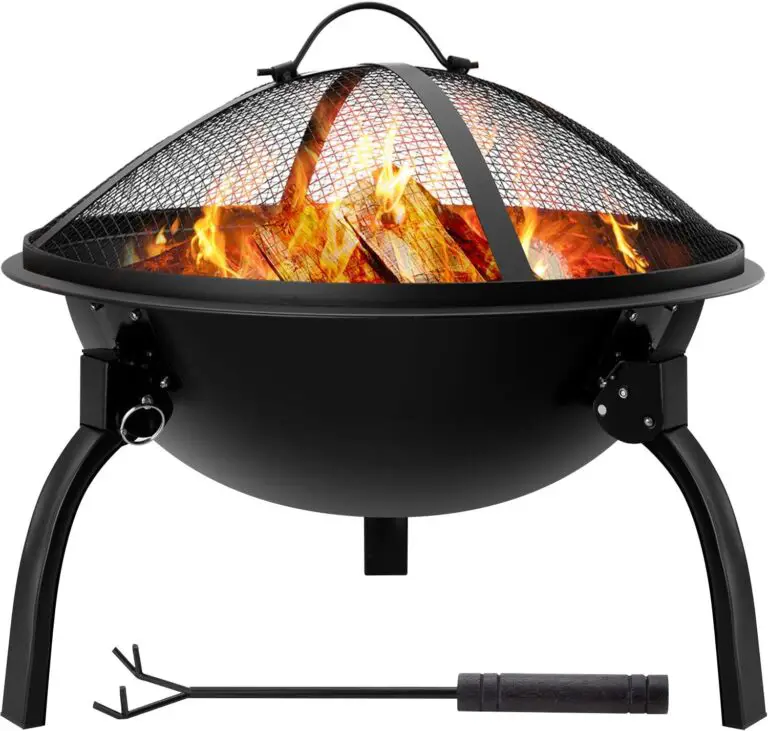35+ Types Of Snake Plants With Pictures
The Snake Plant, also known as the Mother-in-Law’s Tongue, is a popular indoor succulent due to its impressive air-purifying abilities and low-maintenance requirements. Its striking appearance, featuring green or white stripes reminiscent of snake scales, has earned it this unique name. This versatile plant not only adds a touch of elegance to any room but also contributes significantly to improving the air quality by converting CO2 into oxygen at night.
If you’re considering bringing one home for its benefits and unique aesthetic, understanding the different varieties of Snake Plants can be overwhelming. Here’s a comprehensive guide to the numerous types of Sansevieria plants, including their characteristics, growth habits, and more.
Types of Snake Plants (Sansevieria Varieties)
Snake plants, which belong to the flowering succulent family, boast a staggering diversity with over 70 recognized species. One of their most impressive features is their remarkable lifespan – with proper care, they can thrive for up to 15 years. Here’s a look at some of the most popular types you might want to consider:
Sansevieria ‘Bantel’s sensation’
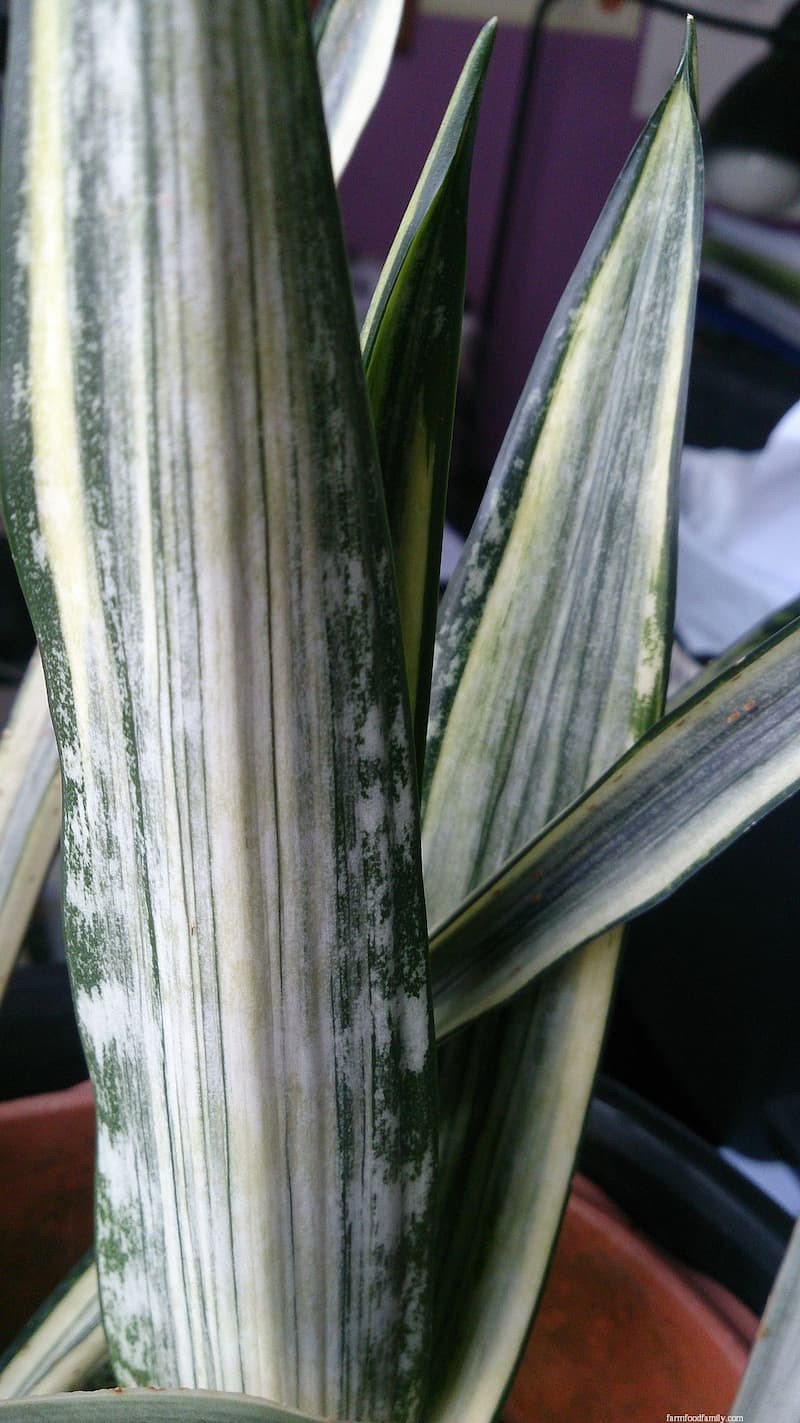
The snake plant’s distinct appearance is characterized by its upright, slender, and straight leaves, which are further enhanced by the creamy white edges and subtle light green stripes. Reaching heights of up to 3ft, this elegant plant can effortlessly add a touch of whimsy to any living room. While it appreciates full sun, it also excels in dappled light, making it an adaptable addition to various indoor spaces.
Sansevieria ‘Cleopatra’
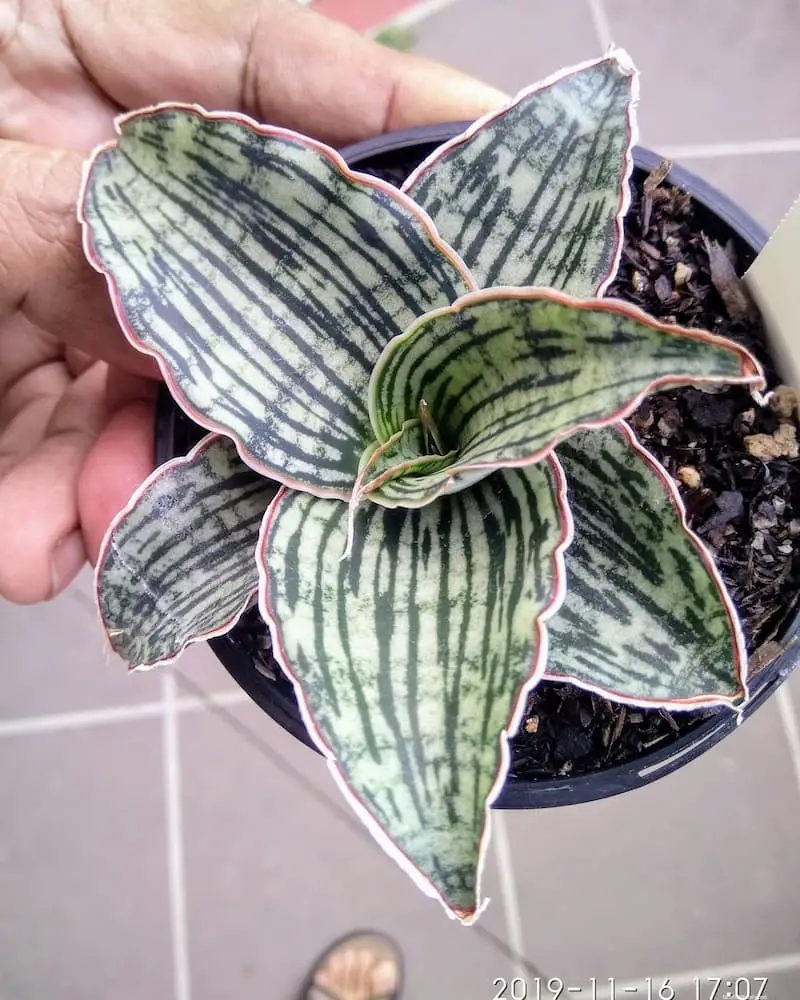
One variety of snake plant that’s gaining popularity is characterized by its striking, dark green leaves with crisscross patterns that give off a subtle, light green luminescence. The leaf edges are adorned with reddish-brown wavy lines, adding to the plant’s unique visual appeal.
Reaching only about a foot in height and growing from a single rosette, this compact houseplant is an ideal choice for office desks and bedrooms, providing a touch of natural elegance without overwhelming its surroundings.
Sansevieria ‘Moonshine’
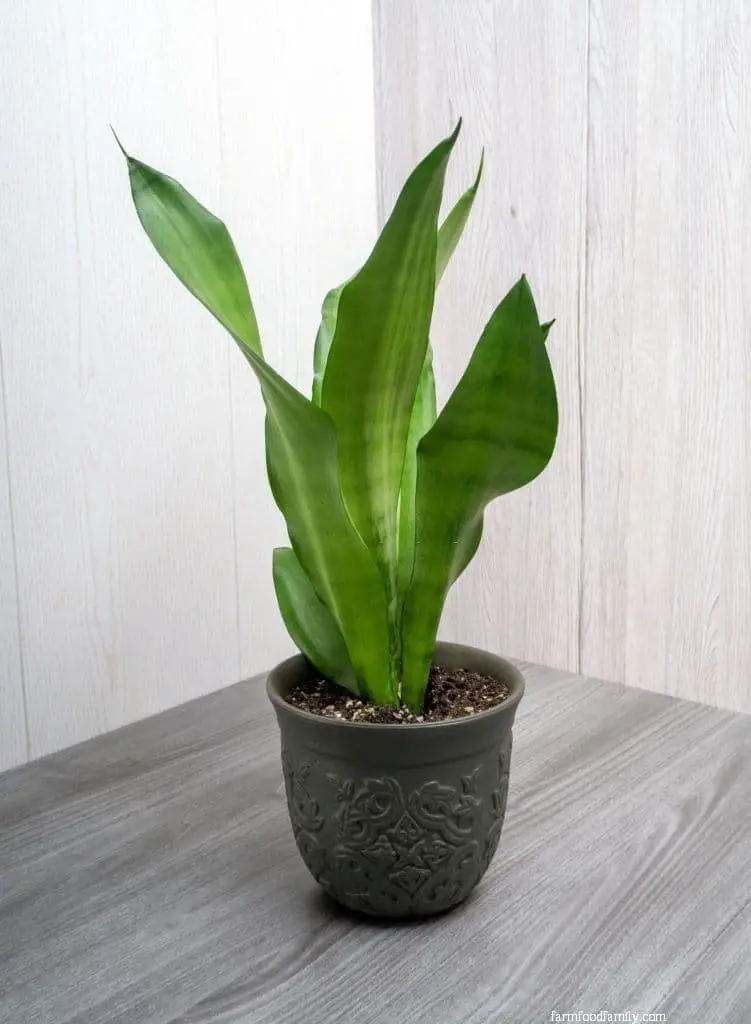
Initially, the moonshine snake plant may not appear to be your typical serpentine specimen. Its unique appearance is characterized by a pale silvery-green hue that shines with a subtle sheen, punctuated by faint green stripes that seem to emanate a soft luminescence, thereby justifying its intriguing moniker. The leaves themselves are broad and grow upright from the plant’s rosette, overlapping as they reach lengths of up to 4 feet, creating a striking visual display.
Sansevieria bacularis
This particular species has the potential to grow up to 5.5 feet tall, boasting leaves with a rich, dark green hue and striking black bands that are particularly noticeable due to their transverse pattern. The leaf tips are also soft and rounded, adding to the overall aesthetic appeal. When planted en masse in a garden bed or border, this plant truly shines during the spring season as it produces vibrant white and purple striped flowers.
While it may not be the most resilient species, it does possess some degree of tolerance for short dry periods, making it a viable option for those who want to add some visual interest to their outdoor spaces.
Sansevieria Ballyi (Dwarf Sansevieria)
The dwarf snake plant is a visually appealing species due to its distinctive tapered tip and mottled leaves. Measuring up to 4 inches in length, these leaves grow from a central rosette that can reach a height of around 12 inches. The most striking feature, however, is the variegated pattern, which displays a beautiful contrast between pale green transverse bands and light yellow leaf color. As spring arrives, this plant comes alive with the appearance of pinkish-white flowers.
Sansevieria burmanica

Native to India, this striking plant is characterized by its upright, lance-shaped leaves that grow in dense rosettes up to 3 feet long and feature distinctive white bands against a deep green backdrop. A single pot can accommodate over 15 leaves, which may gradually shift from vibrant green to a more muted white hue as they mature. In the spring, the plant produces small, greenish-white flowers on stalks that rise at least 3 feet above the foliage, creating a striking display.
Sansevieria concinna
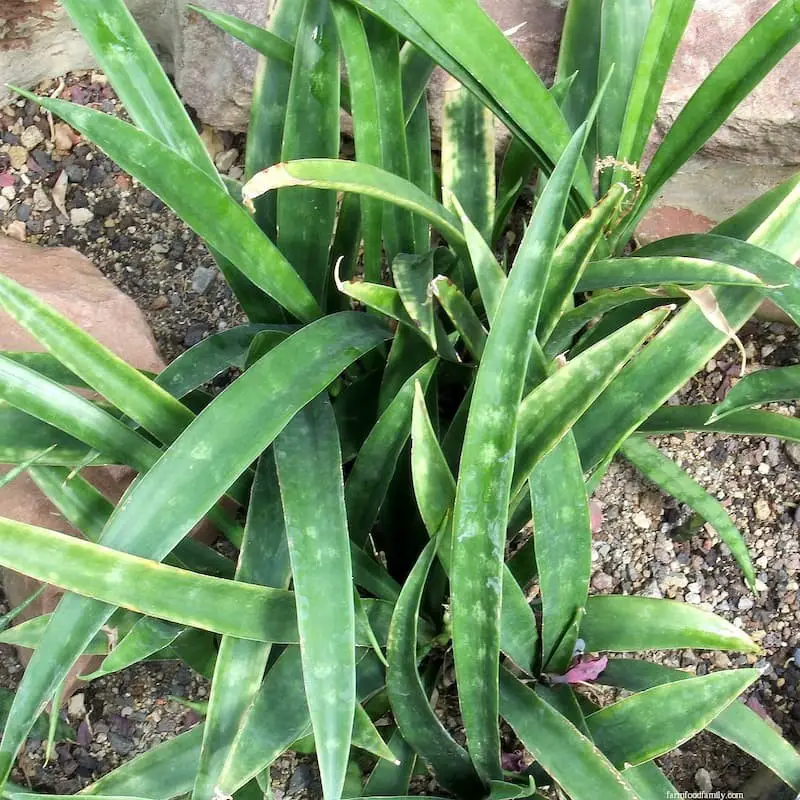
This striking succulent hails from South Africa, boasting a distinctive thick rhizome that gives rise to its characteristic appearance. The plant’s deep green, upright leaves are adorned with wavy, soft margins, forming a stunning rosette shape. Measuring just shy of a foot in length, the leaves boast a smooth and glossy texture, punctuated by attractive green transverse bands.
When properly cared for, this succulent rewards its maintenance with the production of spiky, purplish-white flowers that take on an acorn-like shape.
Sansevieria cylindrica
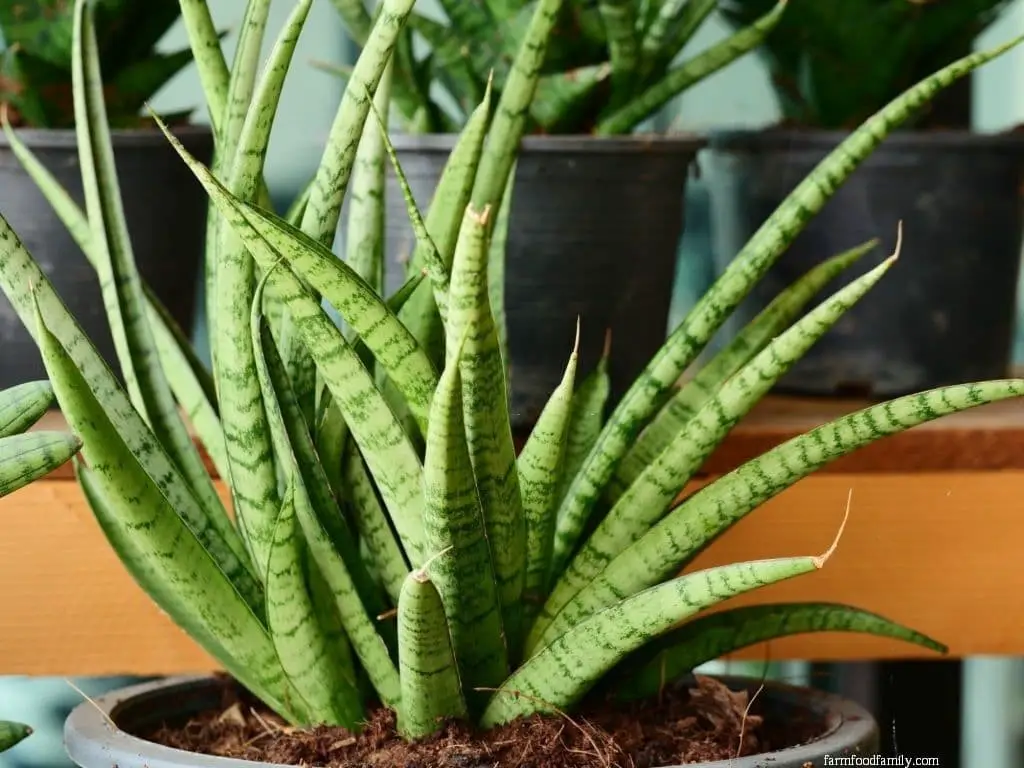
The Sansevieria species known for its columnar leaves is a rare find in the world of succulents. Native to South Africa, this unique plant boasts leaves with a distinctive gray-green hue that sets it apart from other varieties. As the leaves mature, they develop a characteristic furrowing pattern that adds to their visual appeal. Interestingly, the younger leaves display a striking deep green color with pale green transverse bands, gradually transforming into their mature form.
This Sansevieria is also moderately drought-tolerant and can thrive in temperatures as high as 20 degrees Celsius.
Sansevieria Cylindrica ‘Boncel’ (Starfish Sansevieria)
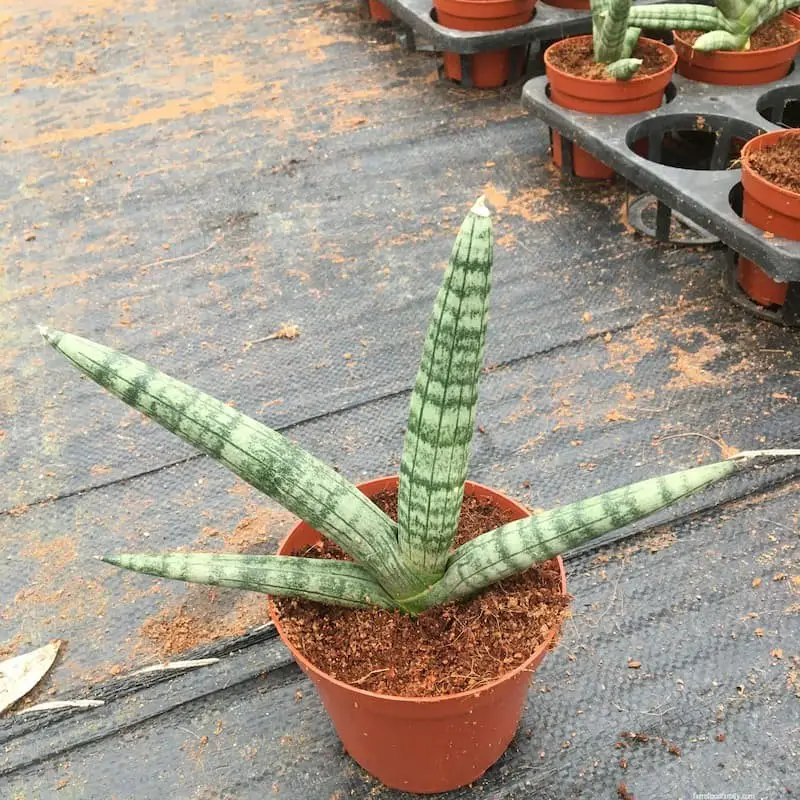
The Snake Plant’s striking foliage features tubular leaves that form a distinctive spike shape, boasting gray-green hues with dark green markings running along their length. Measuring up to 7 feet in length, these fleshy, cylindrical leaves are truly a sight to behold. In contrast, the plant’s starfish-shaped flowers possess a subtle greenish-white coloration and emerge from a central stem that reaches approximately 3 feet in height.
Sansevieria Ehrenbergii ‘Banana’
The Banana Leaf Snake Plant’s unique characteristic is its fleshy leaves, which bear an uncanny resemblance to those of the banana tree. Its dwarf form and broad leaves, with a solitary stem branching upwards from the center, serve as its primary identifying feature. As new growth emerges, it arcs out from the central leaf, eventually reaching up to 3ft in height.
Interestingly, this cultivar also comes with variegated patterns, featuring a striking banana-like underside and a muted grayish-green topside.
Sansevieria Ehrenbergii ‘Blue Sansevieria’
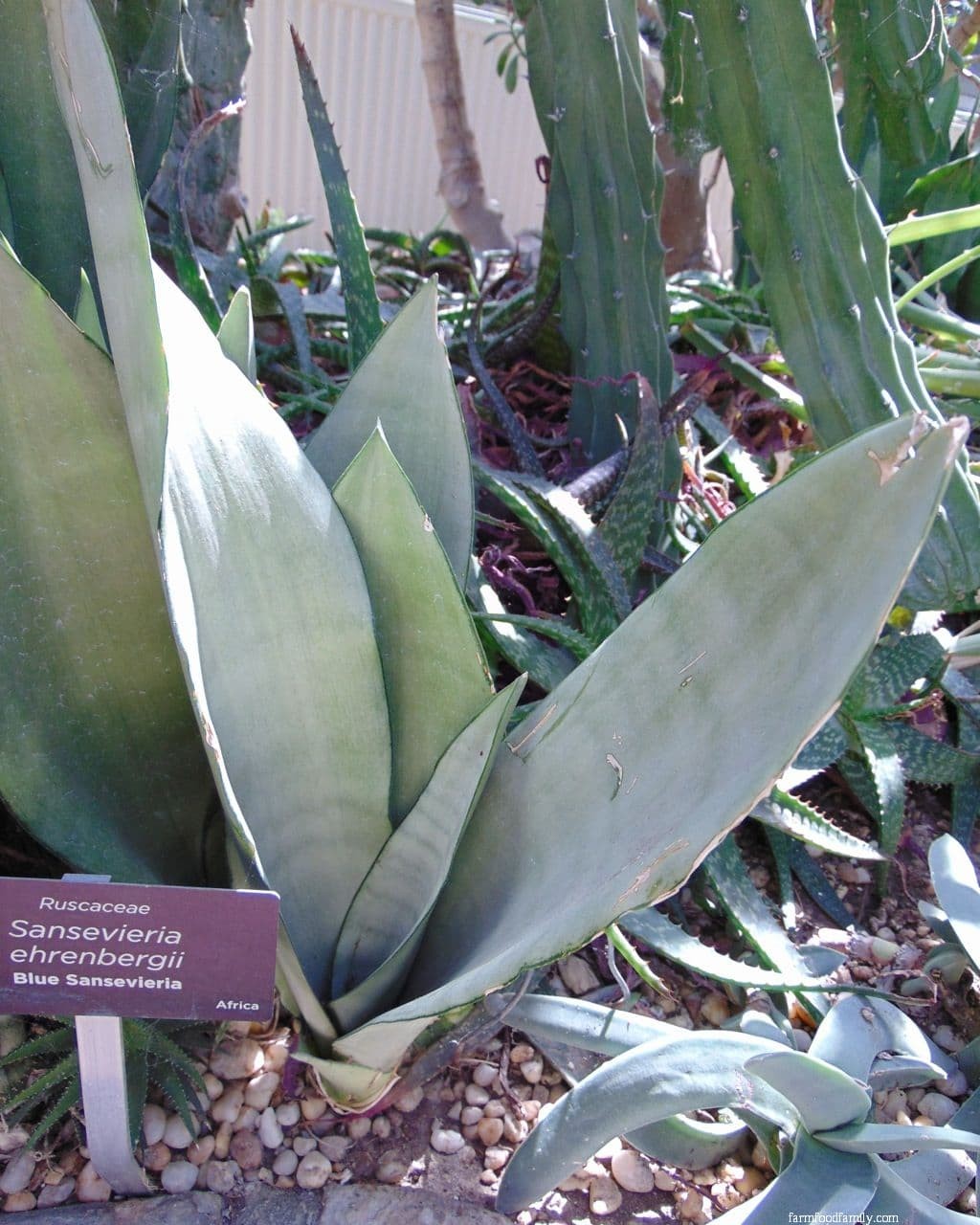
This species is recognized by its distinctive fleshy leaves, which take on a fan-like shape. As it matures, the blue tint gives way to a more muted green or gray-green hue. The leaf shape is characterized by a canoe-like profile, with a grooved top surface and rounded bottom. Notably, the edges are wavy, and the margins are highlighted by vibrant red accents. While its growth rate is slower than some other species, it can still reach impressive heights of up to 5 feet.
Interestingly, this plant has been known by various names, including Somaliland Bowstring Hemp and East African Wide Sisal.
Sansevieria Eilensis
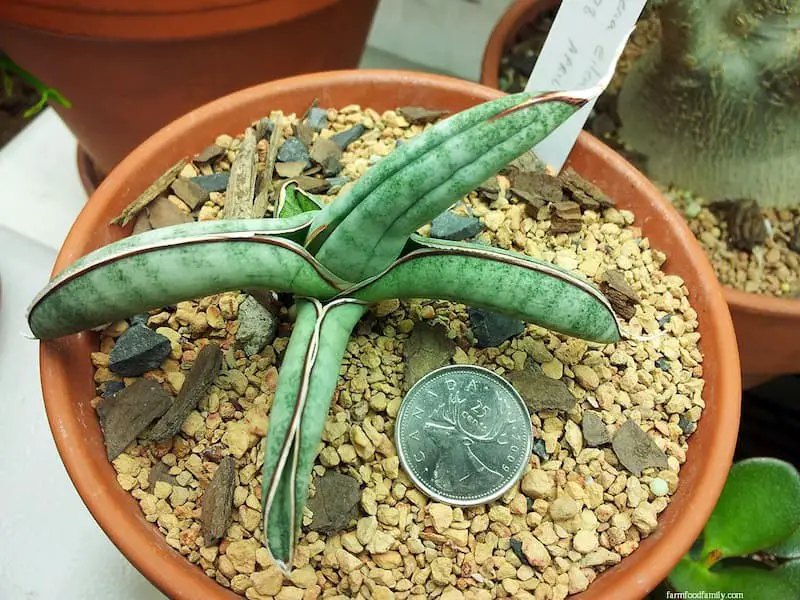
One variety stands out for its unique characteristics. Its bluish-green foliage, which arches downward as it matures, can grow quite thick – up to an inch in some cases. The leaves themselves reach lengths of 5 inches or more, showcasing their fleshy texture.
This particular type is also notable for the horizontal lines that run along its length. These lines are actually a sign of the plant’s adaptability – they shrink or expand depending on the amount of water it receives.
Sansevieria fischeri
This unique variety of plant grows at an impressive rate of 1.5 feet per season, characterized by a distinctive bent and outward growth habit. The leaves are a deep green color with striking white and pale green patches, accompanied by brown margins that add to its visual appeal. Notably, this plant requires warmer temperatures to thrive, as it is sensitive to cooler climates. During the summer months, it produces tube-shaped white flowers, adding to its charm.
Sansevieria francisii
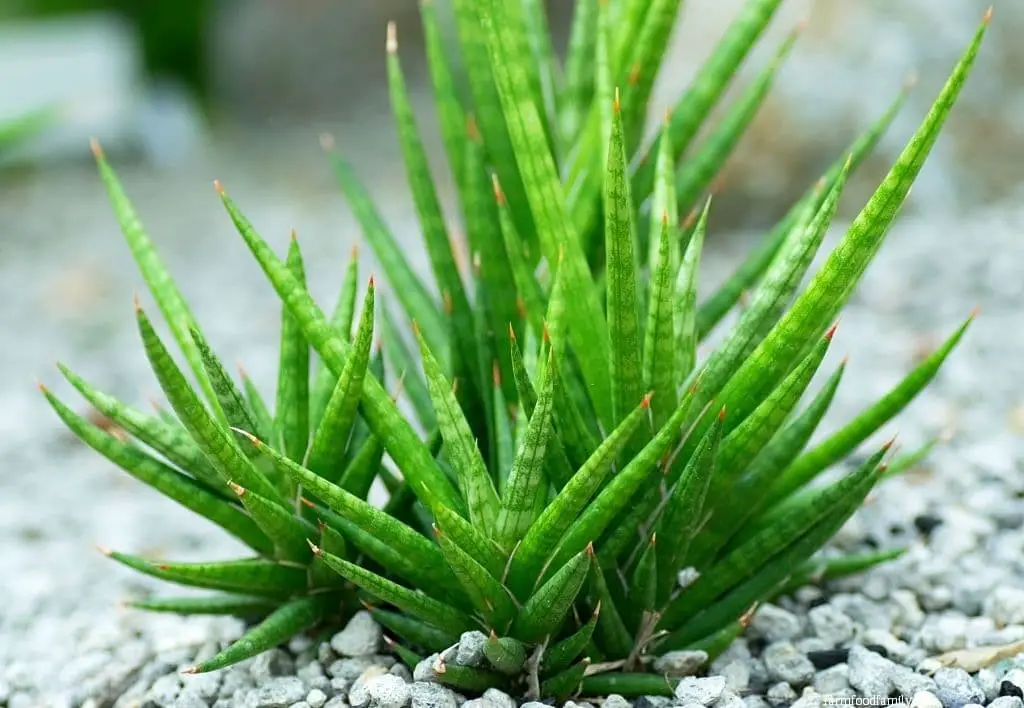
The African Snake Plant, a native Kenyan species, exhibits remarkable adaptability to cooler temperatures, thriving in conditions as low as 10°C. Its unique appearance is characterized by a trunk-like shape and lancing leaves that display a striking combination of dark green, white, and dark green bands. The leaves themselves are a deep green hue, with an upward growth pattern.
This variety is renowned for its rapid propagation capabilities, producing numerous offsets along runners that continuously form. Moreover, it displays impressive heat and drought tolerance, making it an extremely low-maintenance addition to any indoor space.
Sansevieria gracilis
The smallest species of snake plant is characterized by its solitary rosette growth habit. Its dark green leaves are adorned with striking white and green transverse bands, giving them a unique appearance. The leaves themselves are long and pointed, measuring up to 1.5 feet in length at maturity. One notable feature is the plant’s ability to produce small white and yellow flowers during late fall, adding an extra layer of visual interest.
Snake plants with this characteristic prefer indirect lighting conditions and typically grow from a single rosette.
Sansevieria Hyacinthoides
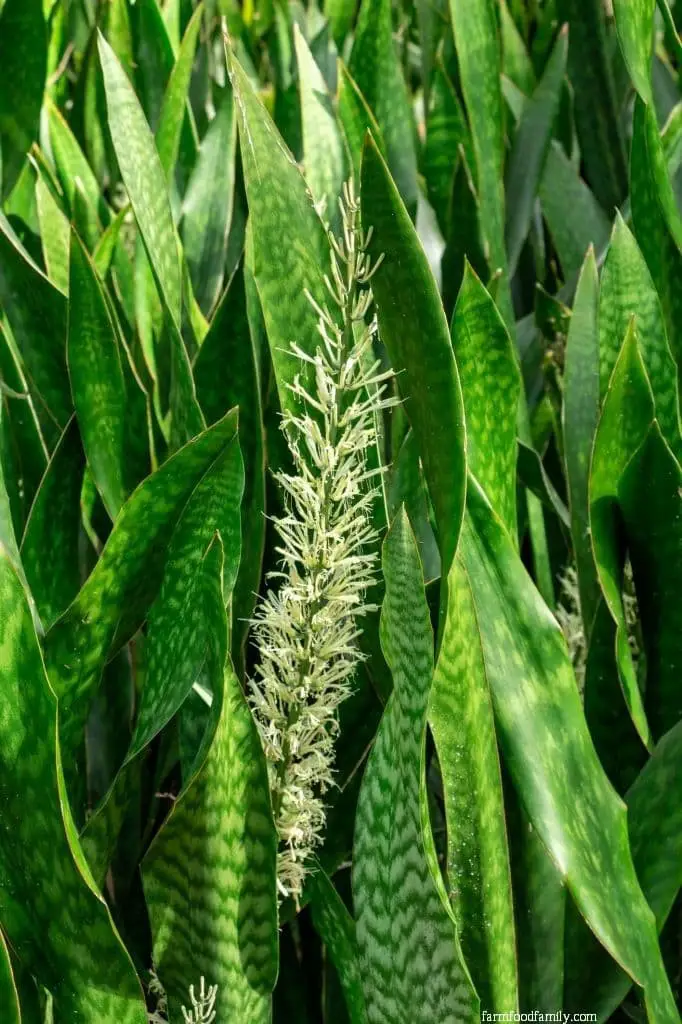
The African bowstring hemp, also known as the dense foliage-forming plant, thrives when mass planted. Its unique characteristic of forming compact clusters makes it an ideal choice for areas with dense shade, preferably below towering trees. The leaves of this plant are striking, growing upright and lance-shaped up to 4 feet in length. Their dark green hue is accentuated by thick, green bands traversing the leaf, which sprout from small stems and clump together in a single rosette.
Sansevieria kirkii ‘Star sansevieria’
The Star-shaped Snake Plant is truly unique, boasting an overall star-like appearance and the distinction of being one of the rarest varieties in existence. Its most striking feature is its lancing leaves that branch outwards, rather than standing upright, and are adorned with a pointed tip. The leaves themselves are a deep green hue with light green stripes, and their edges display a beautiful curvature in shades of yellowish-brown.
However, this plant’s rarity stems from the fact that it requires careful attention to direct sunlight, as it can suffer damage if exposed directly. Moreover, it is also a slower grower compared to many other snake plants, making it all the more special and sought after.
Sansevieria liberica

The leaves of this particular plant are distinguished by their belt-like shape, standing upright and elongated, with a smooth leather-like surface and growing in clusters along a single stem. Measuring approximately 3.5 feet in length, the leaves feature striking bands of dark green and pale green hues. Additionally, the leaf tips gradually turn white as they mature, while the margins exhibit fleshy texture with reddish brown markings.
As for its floral display, this plant produces clusters of white flowers that grow up to 2 feet long in a panicle shape.
Sansevieria longiflora
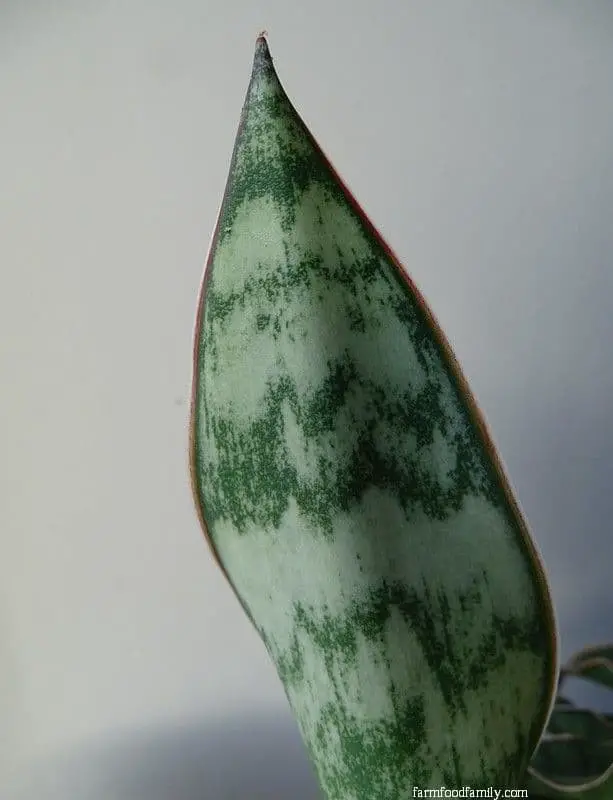
The succulent in question is endemic to Angola, Congo, and Namibia. Its foliage boasts smooth, dark green leaves featuring subtle white flecks and irregular white bands, with a clumping habit that arises from a central rosette. A notable feature of this plant is its leaf margins, which are hard and slightly toothed, with reddish-brown to yellow hues at the edges. The tips of the leaves are also adorned with a long, thin spine.
In the spring, delicate white flowers emerge, adding a touch of elegance to the overall appearance. Notably, this succulent is quite tolerant of cooler temperatures, thriving in conditions as low as 20°C.
Sansevieria masoniana ‘Mason’s congo’
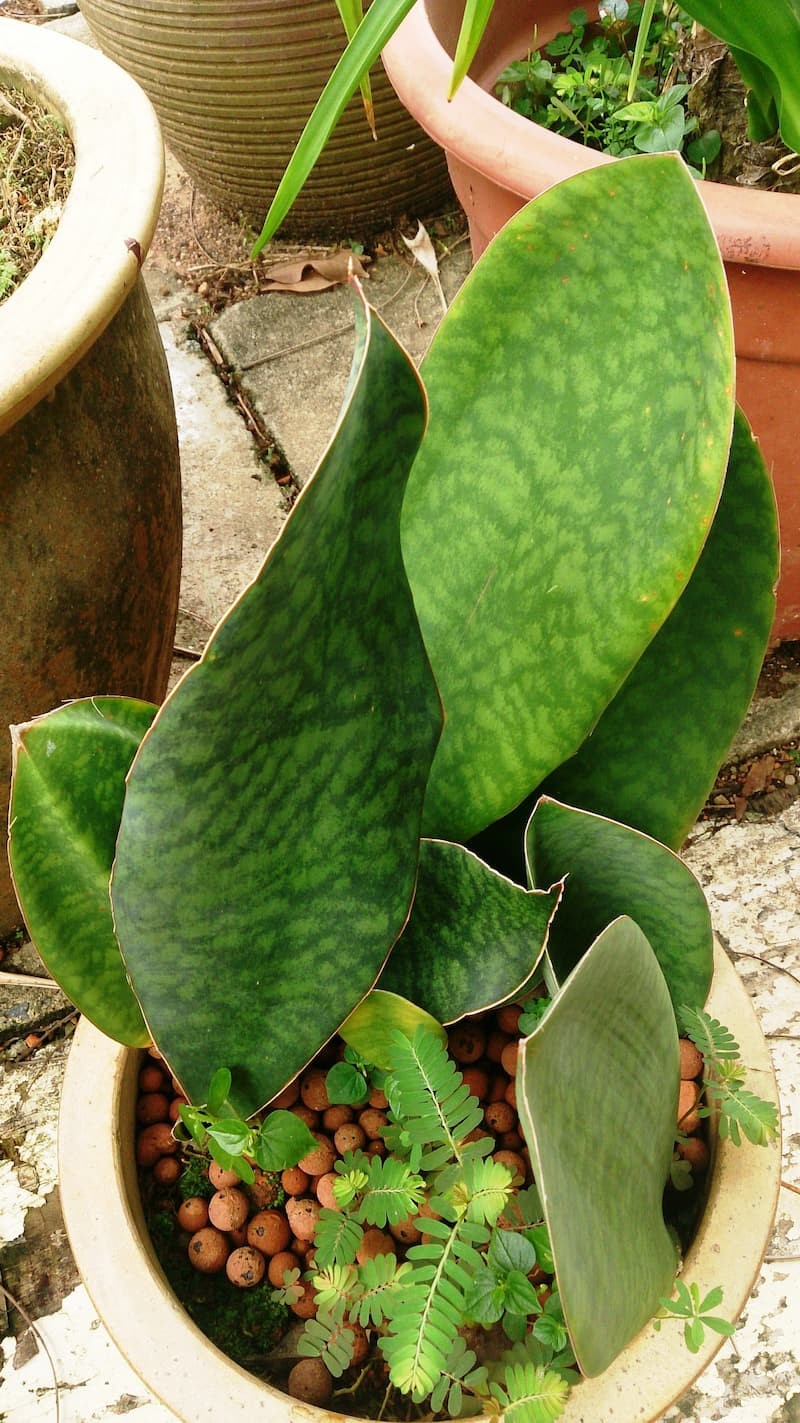
One of the most striking snake plant varieties, this semi-succulent boasts leaves that can grow up to 4ft in length, with an exceptional oval shape. Its broad and long blades are a stunning feature, making it a standout addition to any living room. The variegation on its leaves is truly eye-catching, with vibrant golden yellow and pale green hues complemented by a deep green background. This unique combination of colors makes for a visually appealing display that’s sure to draw attention.
Sansevieria Parva ‘Kenya Hyacinth’
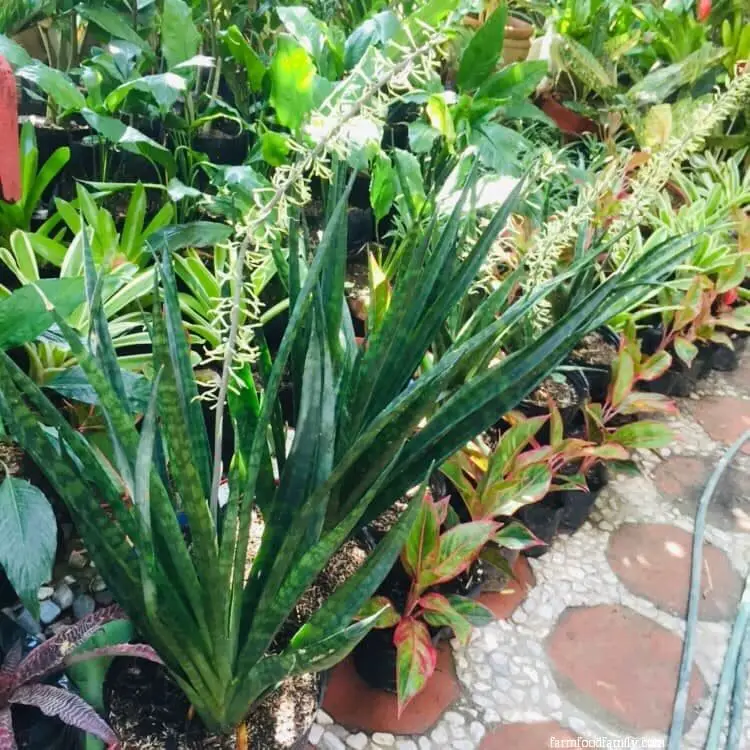
The African Violet (Saintpaulia spp.) is an ideal choice for novice plant enthusiasts due to its remarkable resilience and ease of care. Native to Kenya, Rwanda, and Uganda, this species thrives in well-lit environments, with the ability to tolerate partial shade. Notably, it can flourish in temperatures as low as 20°C.
Its striking foliage features dark green, lance-shaped leaves adorned with a pale green transverse band.
In the spring, African Violets produce lovely pinkish-white blooms, adding an extra layer of charm to this already appealing plant.
Sansevieria Patens
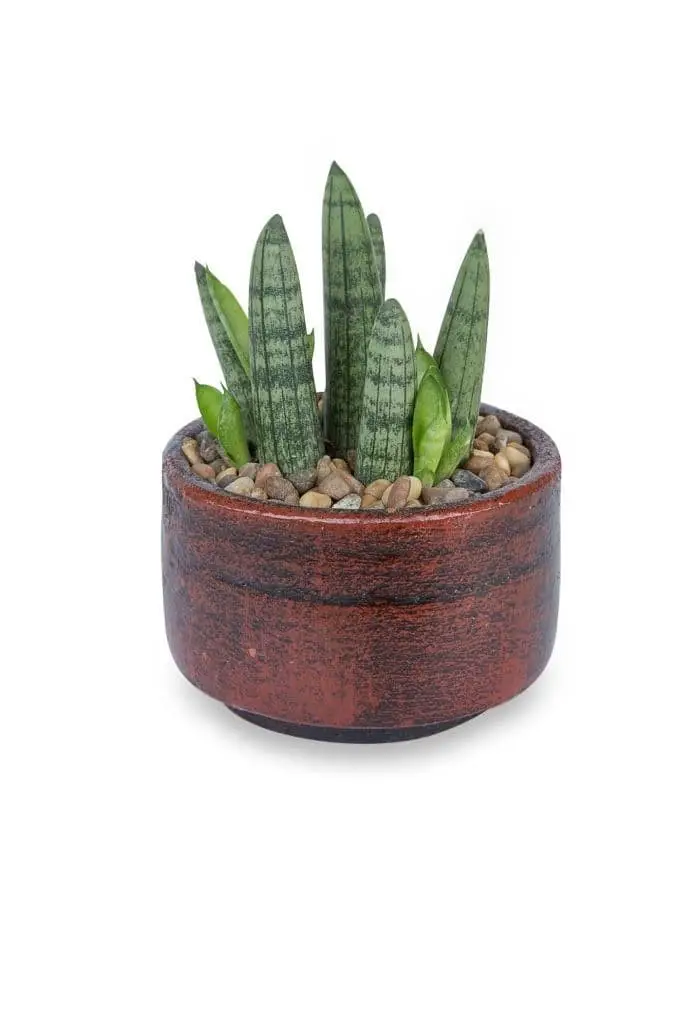
The snake plant’s unique appeal lies in its striking foliage, characterized by fleshy, cylindrical leaves that emerge from a central rosette and grow upright. As it matures, the leaves begin to branch outwards in an elegant arching pattern, reaching up to 3ft in height. The leaf color transitions from a deep green to a bluish-green hue as it ages, with subtle grooves adding texture to its surface.
Interestingly, the Patens variety thrives best in low-light conditions, which enhances the development of its characteristic blue-green tint.
Sansevieria raffillii
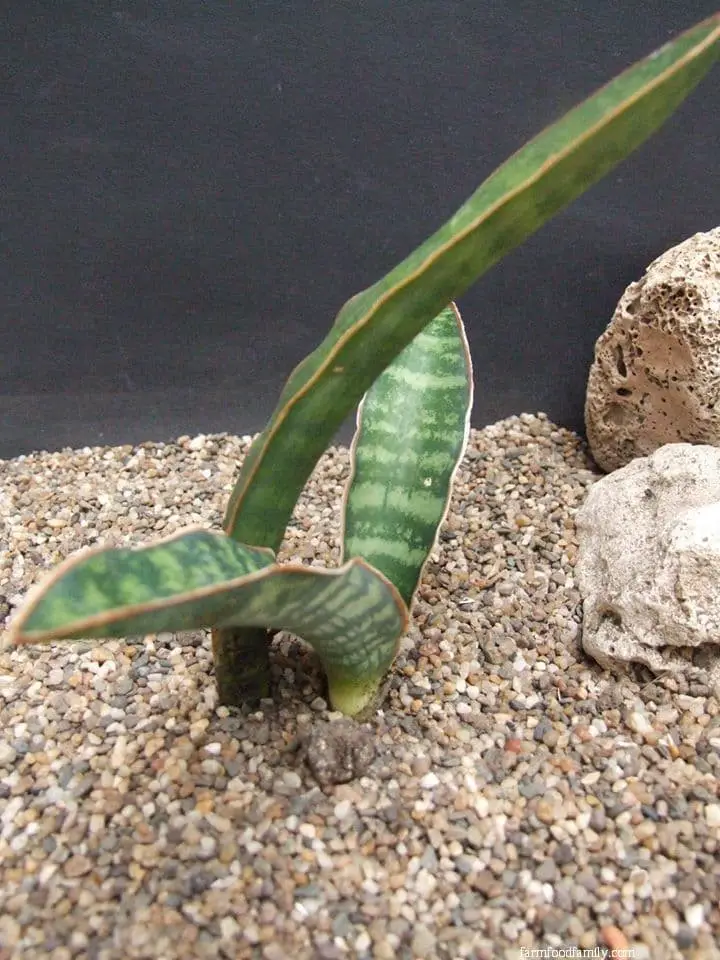
Growing in thick rhizomes, this Kenyan and Somali native boasts leaves that sprout upright, branching out in a lancing formation. Reaching lengths of up to five feet, these dark green leaves feature striking yellow-green spots and irregular pale green bands concentrated at the base. The leaf edges are rigid with distinctive red-brown margins. Measuring up to four feet long, the foliage supports greenish-white flowers that bloom on a panicle, adding a touch of elegance to this unique plant.
Sansevieria senegambica
While most snake plants exhibit a more sprawling or multi-rosetted growth pattern, the West African native stands out for its unique characteristics. This distinct variety is characterized by a compact, solitary rosette comprising just four leaves each. The leaves themselves are noteworthy for their upright, tapered shape, slightly curved at the tip. A key feature of this plant is the smooth, dark green leaf surface adorned with very fine, white-striped transverse bands.
As the leaves reach up to 2ft in length, they are accompanied by attractive white flowers that undergo a striking transformation when exposed to light – transforming into a rich shade of purple.
Sansevieria subspicata
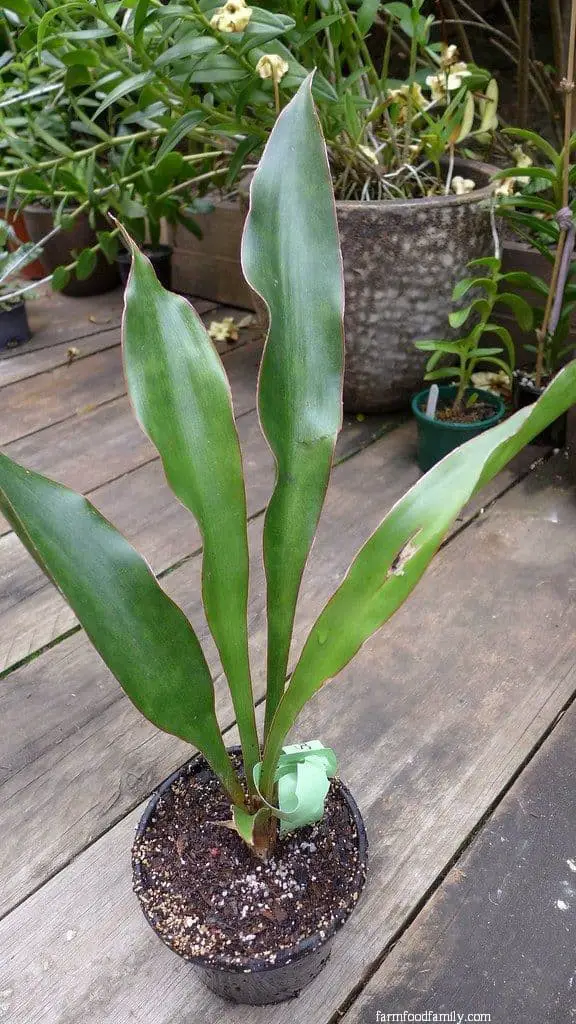
The Mozambique native plant is a compact option that reaches only 2 feet in height. Its versatility makes it an ideal choice for use as a ground cover, particularly when planted beneath large trees that provide shade. The leaves are characterized by their upright, lance-shaped form and develop a gentle curvature as they mature. A distinguishing feature of this plant is its bluish-green color, which tapers to a point and features green margins that gradually turn white with age.
Notably, it can thrive in relatively cool temperatures, tolerating lows of around 20 degrees Celsius.
Sansevieria trifasciata

The most well-known species of snake plant is one that’s often introduced to newbies in the world of plant parenthood. Its unique characteristic lies in its ability to spread from rhizomes, producing linear, lance-shaped leaves. The foliage is distinguished by smooth, waxy texture and striking patterns featuring alternating shades of dark and pale green or white. What’s more, this variety boasts a range of stunning cultivars.
Sansevieria Trifasciata ‘Black Gold’ (Viper’s Bowstring Hemp)

This unusual specimen boasts striking dark green leaves with vibrant yellow margins, accompanied by a textured, fibrous quality that can grow up to 3ft in length. As spring arrives, it produces delicate white or yellowish flowers. Notably, NASA has recognized this plant as one of the top 10 air-purifying plants ideal for bedrooms, thanks to its calming effect on the environment. Moreover, in Chinese feng shui, this lucky plant is revered for its auspicious symbolism.
Sansevieria Trifasciata ‘Cylindrica’
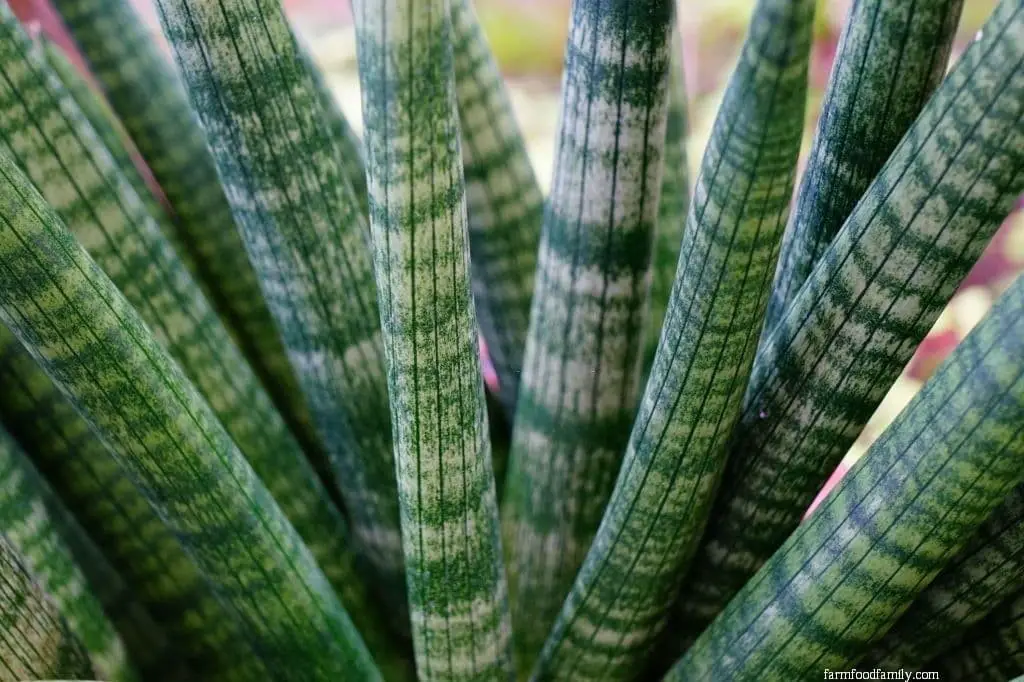
The snake plant’s distinctive appearance is characterized by its long, tubular leaves that are fleshy and thick at the base. These leaves can grow up to 7 feet in length, with an upright habit that subtly bends as they mature. The leaves’ surface features a range of green shades, giving them a unique texture and pattern. As the plant matures, it develops a fan-shaped silhouette, with multiple rosettes forming a clumping effect.
Interestingly, this species is also known by several other names, including Brazil Saint Barbara Sword and Elephant’s Toothpick.
Sansevieria Trifasciata ‘Futura Robusta’

One distinctive feature of this plant is its striped leaves, which have a subtle gray-green hue. In fact, it’s also characterized by leaf shapes that are similar to those found on Sansevieria species, albeit with a shorter length. The plant’s unique profile is further accentuated by its upright, lance-shaped growth habit, which can take the form of a dense clump or twisted mass. As an indoor plant, it has adapted to thrive in conditions that favor low watering and can grow up to 2 feet tall.
Sansevieria Trifasciata ‘Futura Superba’
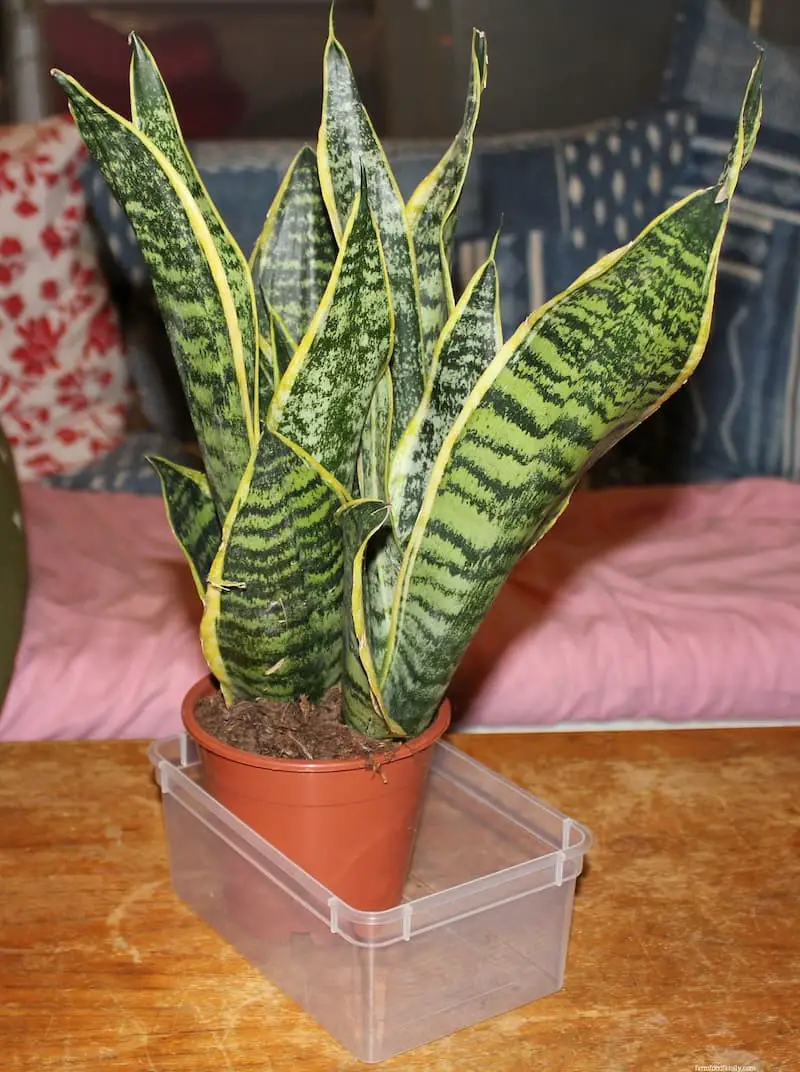
The ‘Black Prince’ Dracaena is a stunning addition to any living room, boasting dark green leaves with bright yellow edges that provide a striking visual display. Its compact size makes it an excellent choice for those seeking a dwarf version of the popular Black Gold variety. While its leaves are shorter and broader than their larger counterpart, they follow an upright growth habit that allows this plant to thrive in low-light conditions.
At maturity, the ‘Black Prince’ Dracaena reaches approximately 2ft tall, making it a perfect candidate for container gardening.
Sansevieria Trifasciata ‘Golden Hahnii’
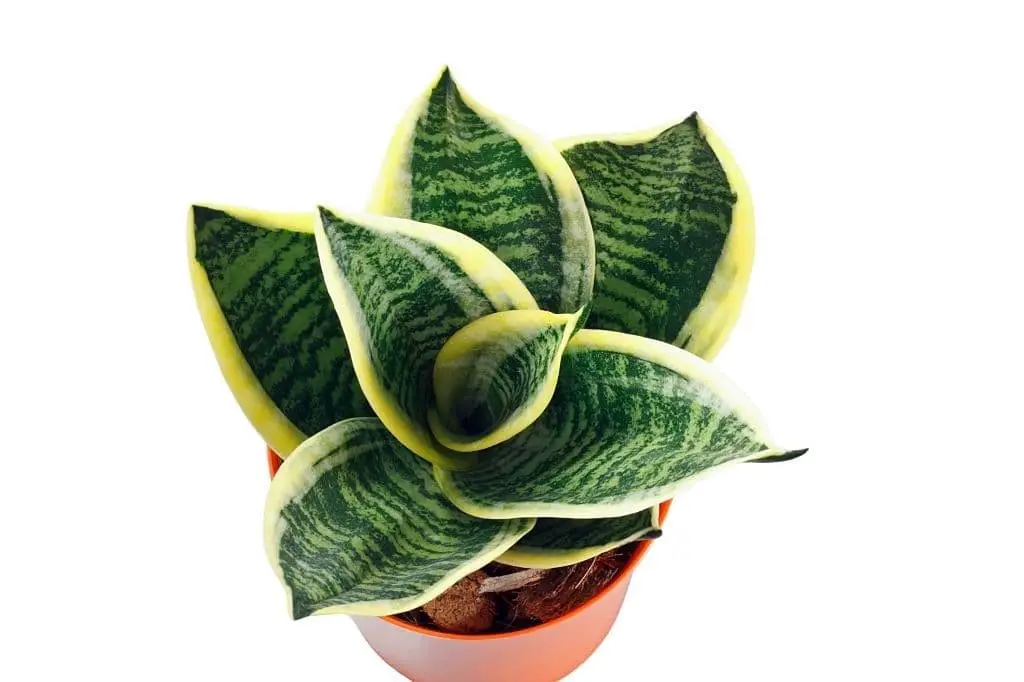
The Bird’s Nest Sansevieria boasts a more irregular shape compared to its Twisted Sister counterpart. Its distinctive feature is the broad, tapered leaves that display horizontal green and white stripes. As the plant matures, these leaves grow in a clumping habit from a central rosette, eventually reaching up to 2 feet in height.
Sansevieria Trifasciata ‘Laurentii’
Standing at an impressive 4ft tall, S. Trifasciata’s tallest species boasts greenish-gray leaves featuring striking yellow and green variegations. The leaves’ edges are a vibrant yellow, while horizontal yellow bands add a sleek, elegant touch to the overall design. As a low-maintenance option with a pop of color, this variety thrives as an indoor plant in the living room, its height making it a commanding presence.
Sansevieria Trifasciata ‘Twisted Sister’

This snake plant’s unique characteristic lies in its twisted leaves that resemble a birds’ nest. The leaves themselves are leathery and feature a striking variegated pattern of green and yellow hues with bright yellow margins. Notably, the leaves also display silver-green markings that run along their curved lengths. As one of the dwarf varieties within the S. Trifasciata species, this plant grows to approximately 12 inches in height, making it a compact addition to any indoor space.
Sansevieria Whitney
This dwarf snake plant variant boasts striking dark green foliage with silvery-green undersides and edges, further accentuated by vibrant white and yellow stripes that cover its leaves. Its growth pattern consists of a single rosette, giving rise to a clump of 4-6 upright, slightly curved leaves. Notably, this variety is well-suited for beginners, as it proves surprisingly resilient in the face of neglect, requiring minimal care to thrive.
Sansevieria zeylanica ‘Ceylon Bowstring Hemp’
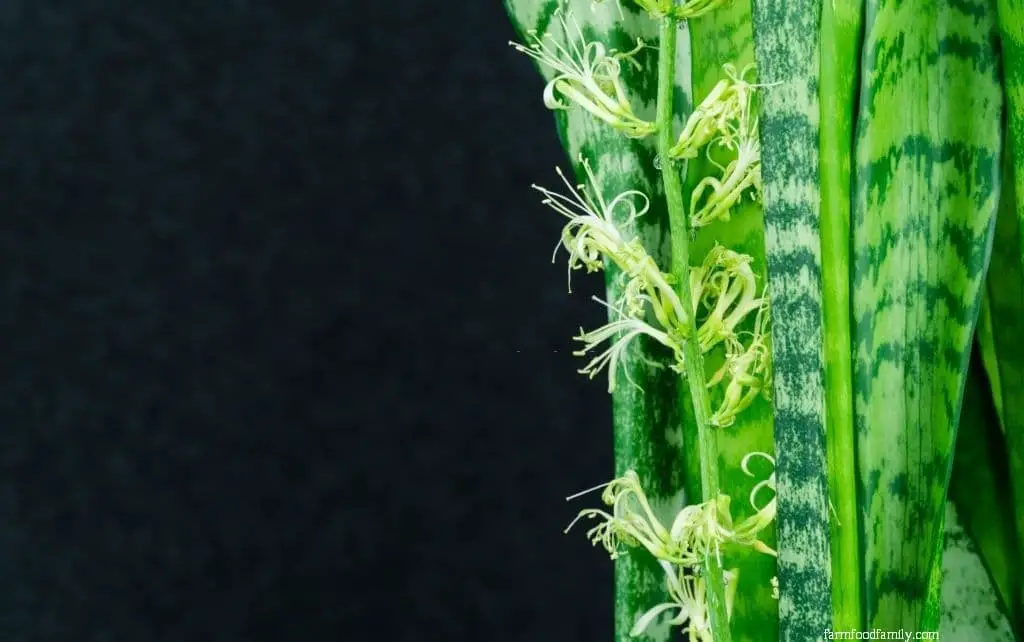
This tropical plant is endemic to Sri Lanka, where it flourishes in well-draining sandy and rocky environments. Reaching heights of up to 3 feet, it boasts striking foliage featuring leathery, upright leaves with a unique combination of dark green, white, and green stripes. Notably, the flat root system allows for extensive spreading once the plant has matured and become established.
FAQs
Beyond their remarkable diversity, with over 60 species, snake plants have garnered attention for their versatility and ease of cultivation. To facilitate a comprehensive understanding of these intriguing plants, we’ll delve into some of the most commonly asked questions regarding their growth habits, care requirements, and potential applications.
Are snake plants poisonous?
While it’s true that the snake plant has its share of negative press, the reality is that it’s actually quite harmless. According to Healthline, the leaves and roots do contain a mildly toxic chemical, but only if ingested in large quantities. The key takeaway here is that this toxicity is relatively low-risk when compared to other plants on the market. As such, it’s still important to keep an eye on pets and young children around these plants, just to be safe.
Can snake plants live outside?
All snake plants require at least four hours of direct sunlight to thrive. This makes them an excellent choice for outdoor containers, as they can be placed in areas that receive full sun or partial shade. In fact, many people choose to landscape with snake plants by placing them on porches, poolside patios, or in decorative planters. Their ability to tolerate a range of light conditions makes them a versatile and low-maintenance option for outdoor spaces.
Are snake plants succulents?
Per Succulents and Sunshine, snake plants possess an uncanny ability to thrive in conditions that would be challenging for many other succulent species. For instance, they can not only survive but also flourish in low-light environments and exhibit remarkable resilience when it comes to neglect. This makes them an ideal choice for novice plant enthusiasts who may struggle with the demands of more finicky species.
Moreover, their ability to retain moisture through their long, pointed, and lance-shaped leaves has earned them the colloquial moniker ‘mother-in-law’s tongue’.
How fast do snake plants grow?
Snake plant growth is influenced by both the specific variety and the level of care provided. Despite entering dormancy during autumn and winter months, these plants typically exhibit a growth rate of 2-3 feet per growing season, with this pace remaining relatively consistent across different cultivars.
Where to buy snake plants?
You’re now equipped with the knowledge of what makes snake plants thrive. But, where can you actually get your hands on these stylish and low-maintenance additions? Beyond visiting local nurseries, there are several reliable online retailers that offer a wide range of snake plant varieties for delivery. Some notable options include Walmart, Amazon, Etsy, The Sill, Urban Stems, Bloomscape, Terrain, Garden Goods, Costa Farms, Home Depot, and FTD.
How big do snake plants get?
Snake plants have the remarkable ability to adapt their growth to their environment, making them an ideal choice for various spaces. Their height can range from a modest 8 inches to an impressive 12 feet, with leaf lengths that can stretch from just under a foot to a substantial 6 feet long. When potted and provided with ample shade, the plant’s growth can be deliberately controlled, reaching up to 3 feet tall.
Which variety of snake plant grows the tallest?
The Sansevieria stuckyi stands out as the tallest snake plant species, reaching impressive heights of 10-12 feet. Native to South Africa, specifically in Zimbabwe, Kenya, and Mozambique, this species has adapted well to its surroundings. Interestingly, it has also been naturalized in Eastern Asia, although its presence in Zimbabwe is currently listed as extinct.
Do snake plants attract bugs?
While snake plants do come with a few drawbacks, one major issue is their tendency to attract unwanted pests. Insects like aphids, whiteflies, spider mites, gnats, and scales are drawn to these plants due to overwatering, excessive humidity, or poor air circulation in the surrounding environment. It’s essential to recognize that these problems can be mitigated by ensuring your snake plant is planted in a well-ventilated area with optimal watering habits.
Related Posts
To embark on a fulfilling career as a plant breeder, follow this step-by-step guide. First, gain a solid understanding of botany, genetics, and breeding principles by pursuing a degree in horticulture or a related field. Next, acquire hands-on experience through internships or volunteer work with experienced breeders. This will not only hone your skills but also provide valuable insights into the industry.
As you progress, stay up-to-date with the latest research and technological advancements in plant breeding. Building a strong professional network is also crucial, as it can lead to new opportunities and collaborations. Finally, consider obtaining certifications or specialized training to further solidify your expertise. Meanwhile, explore seasonal container plants for autumn baskets that thrive during the fall season.
Discover annuals like mums and asters, which provide vibrant colors, and perennials such as sedum and euphorbia, which offer structural interest. For dry, shady gardens, look to foliage plants like hostas, ferns, and ajuga, which bring texture and visual appeal. When seeking vertical accents for your containers, consider upright-growing annuals like ornamental grasses or perennials like bamboo or boxwood.




